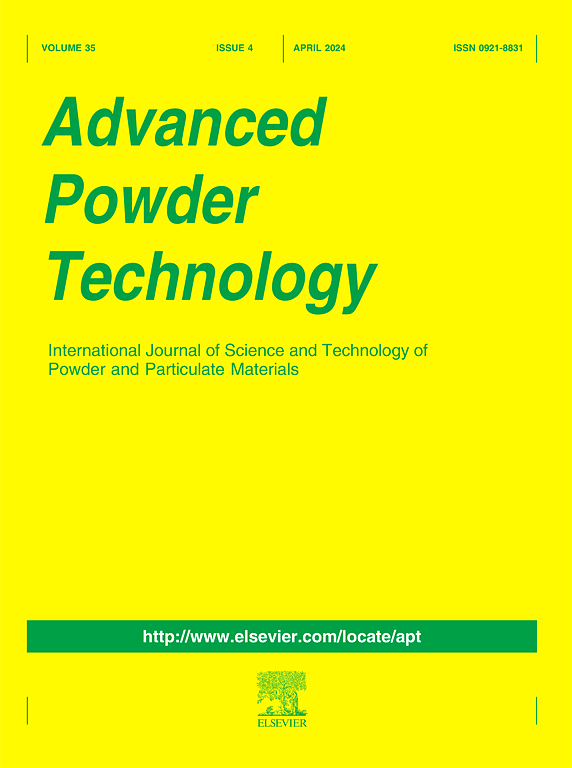Numerical study on the combustion characteristics and soot formation in an outwardly propagating iso-octane rich turbulent flame
IF 4.2
2区 工程技术
Q2 ENGINEERING, CHEMICAL
引用次数: 0
Abstract
Direct numerical simulation of a two-dimensional outwardly propagating iso-octane rich turbulent flames which was classified into Corrugated Flamelets regime in Peters diagram was conducted at an equivalence ratio of 1.4 to investigate the effects of local flame stretch rate and turbulence on soot formation and distribution with a non-unity Lewis number. Soot formation was investigated at points where the flame stretch rate was almost identical, while the contribution of curvature and flow to stretch rate differed. At all points, soot formation is remarkable at regions with negative flame stretch rate compared to regions with positive flame stretch rate. These results suggest that flame stretch rate may correlate with soot formation in turbulent flames in the Corrugated Flamelets regime. In this study, C2H2 is regarded as the precursor of soot. At regions with negative flame stretch rate, the C2H2 concentration is higher than that at regions with positive flame stretch rate. In addition, in the region where the contribution of flow field is larger than that of curvature, soot distribution is located further towards the burned side compared to the region of negative flame stretch rate. These results indicate that the effect of turbulence itself on soot distribution.

向外传播的富异辛烷湍流火焰燃烧特性及烟尘形成的数值研究
在等效比为1.4的条件下,对二维向外传播的、在Peters图中被划分为波纹Flamelets区的富异辛烷湍流火焰进行了直接数值模拟,研究了局部火焰拉伸率和湍流对非统一Lewis数下烟尘形成和分布的影响。研究了在火焰拉伸速率几乎相同,曲率和流动对拉伸速率的贡献不同的点上烟灰的形成。在所有点上,与正火焰拉伸率区域相比,负火焰拉伸率区域的烟尘形成显著。这些结果表明,火焰拉伸率可能与波纹小火焰湍流火焰中烟灰的形成有关。在本研究中,C2H2被认为是煤烟的前体。在负火焰拉伸速率区域,C2H2浓度高于正火焰拉伸速率区域。此外,在流场贡献大于曲率贡献的区域,与负火焰拉伸率区域相比,烟灰分布更靠近燃烧侧。这些结果表明湍流本身对烟尘分布的影响。
本文章由计算机程序翻译,如有差异,请以英文原文为准。
求助全文
约1分钟内获得全文
求助全文
来源期刊

Advanced Powder Technology
工程技术-工程:化工
CiteScore
9.50
自引率
7.70%
发文量
424
审稿时长
55 days
期刊介绍:
The aim of Advanced Powder Technology is to meet the demand for an international journal that integrates all aspects of science and technology research on powder and particulate materials. The journal fulfills this purpose by publishing original research papers, rapid communications, reviews, and translated articles by prominent researchers worldwide.
The editorial work of Advanced Powder Technology, which was founded as the International Journal of the Society of Powder Technology, Japan, is now shared by distinguished board members, who operate in a unique framework designed to respond to the increasing global demand for articles on not only powder and particles, but also on various materials produced from them.
Advanced Powder Technology covers various areas, but a discussion of powder and particles is required in articles. Topics include: Production of powder and particulate materials in gases and liquids(nanoparticles, fine ceramics, pharmaceuticals, novel functional materials, etc.); Aerosol and colloidal processing; Powder and particle characterization; Dynamics and phenomena; Calculation and simulation (CFD, DEM, Monte Carlo method, population balance, etc.); Measurement and control of powder processes; Particle modification; Comminution; Powder handling and operations (storage, transport, granulation, separation, fluidization, etc.)
 求助内容:
求助内容: 应助结果提醒方式:
应助结果提醒方式:


